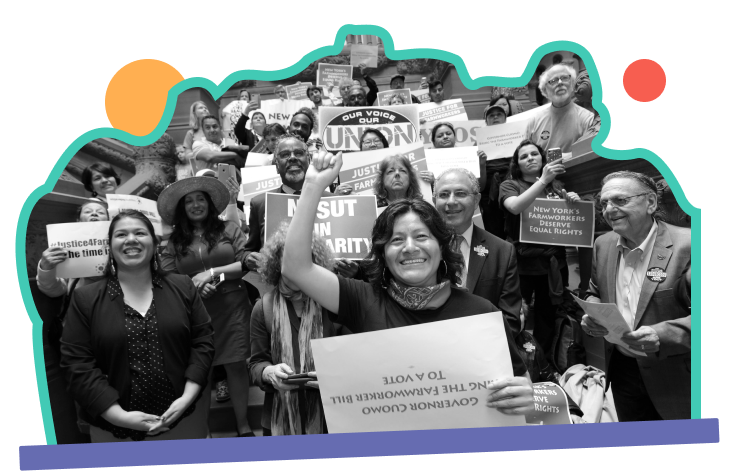
Rural community organizations have been key to affecting statewide progressive policy change in New York State.
It will take dedicated and coordinated efforts by many individuals and organizations over the long term to achieve transformational change.
Organizers say it is important to maintain funding to harness the collective power of various grassroots groups across the state, including New York's rural communities.
As one organizer explained about the complex and powerful reality of rural communities - which translates into challenges to secure at-scale funding for their work: “We’re focused on workplace and economic justice and find ourselves really at the nexus of several interesting converging struggles and opportunities.”
Statewide organizing requires more collaborative grantmaking from funders
For example, one foundation’s grant investments in statewide collaboration and coalition building across grassroots groups could leverage another foundation’s direct investment in base building and organizing the efforts of an organization in the coalition. While increasing direct investments to grassroots organizations clearly is needed, organizers caution against simply shifting current resource allocation away from statewide coalitions toward grassroots organizing.
Instead, they suggest that funding for coalition building and collaboration should be sustained, and that philanthropy should “grow the pie” by working to bring other funders into the organizing and advocacy “ecosystem.”
A lack of financial resources combined with large geographic footprints often requires organizations to partner with each other out of necessity, such as having grassroots organizations work with direct-service organizations.
Working together, grassroots organizations can help direct-service agencies achieve greater reach within affected populations; in turn, direct-service groups can help grassroots organizations identify potential new members. In other cases, it also becomes necessary, for financial reasons, for direct-service work and organizing to take place within the same entity.
Organizers also describe a general openness to working with any organization that shares their values and goals. They said they must be open to partnership because the need is too great relative to their capacity to “go it alone.”
Nearly two-thirds of our grassroots partners in rural New York described their organizations, or critical partner organizations, as being small and having limited capacity. Several felt they did not have enough funding to maintain adequate staffing levels, with a few organizations unable to maintain paid staffing consistently.
Their most significant need is for substantially more funding for community organizers across rural New York. Some organizations note regrants from statewide tables to compensate for time participating in those tables as being helpful. Still, given difficulties maintaining a sufficient staffing level, it would be more useful to get direct funding for a full-time organizer independent of any requirements to participate in statewide tables.
IRSG's New York Rural Organizing Portfolio focuses on resourcing this precise component of the state's infrastructure: grassroots base building organizations working in rural communities.

